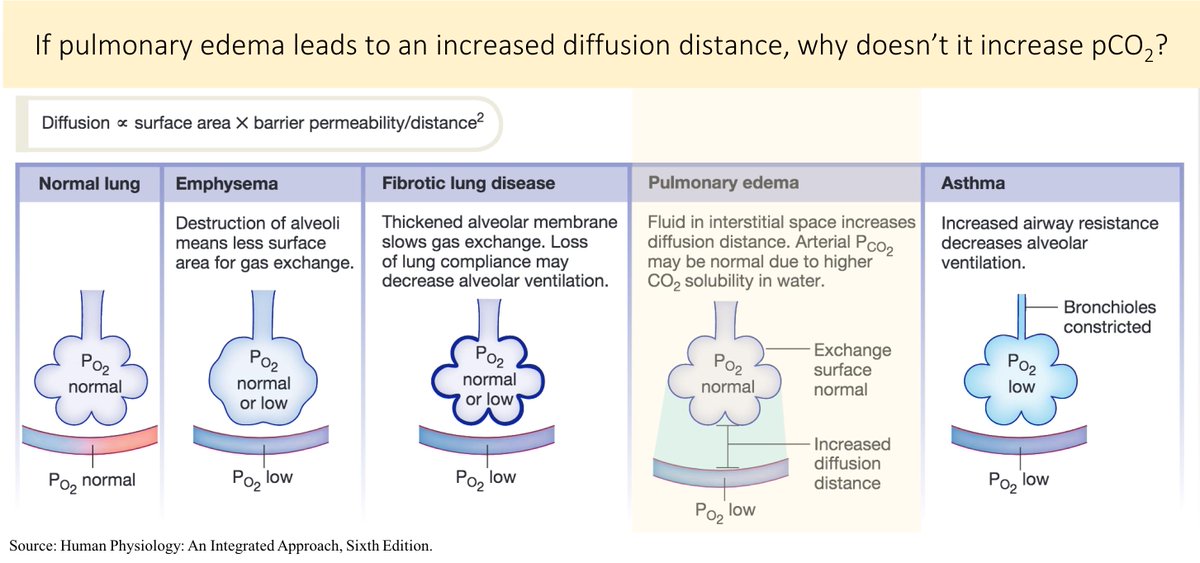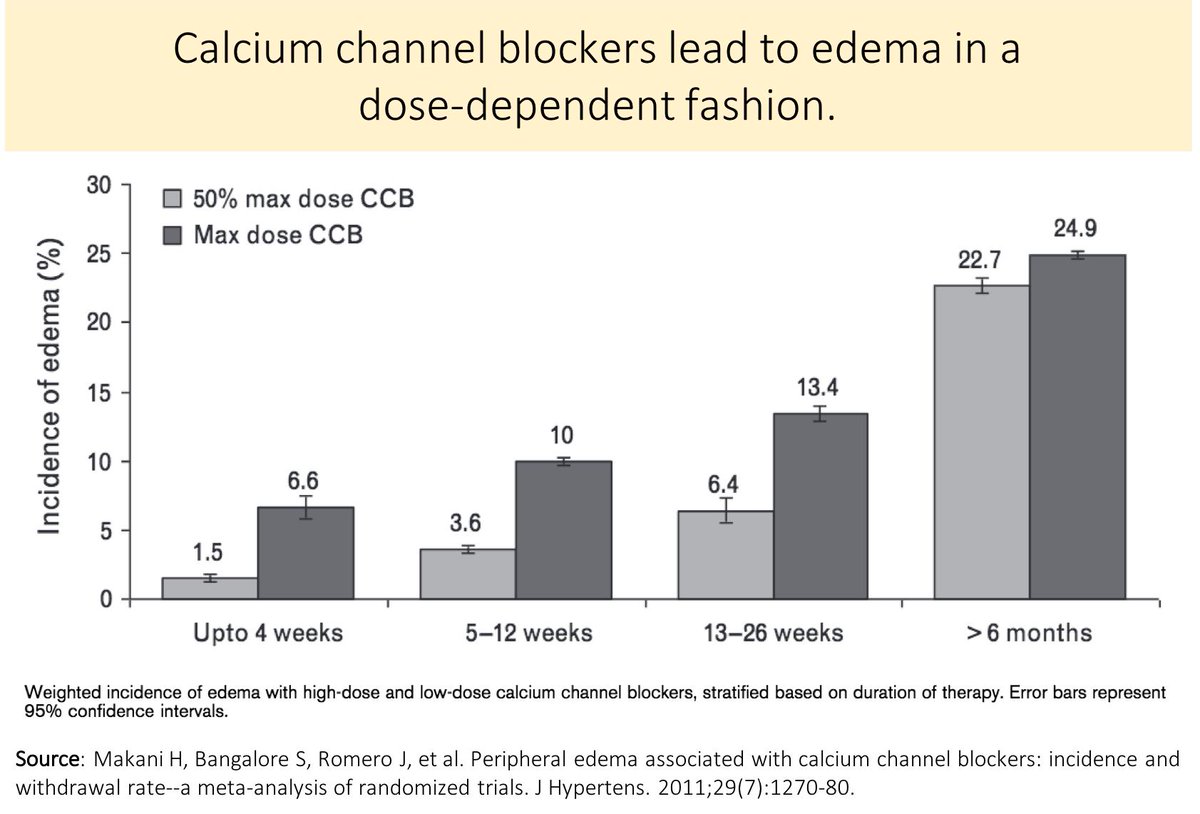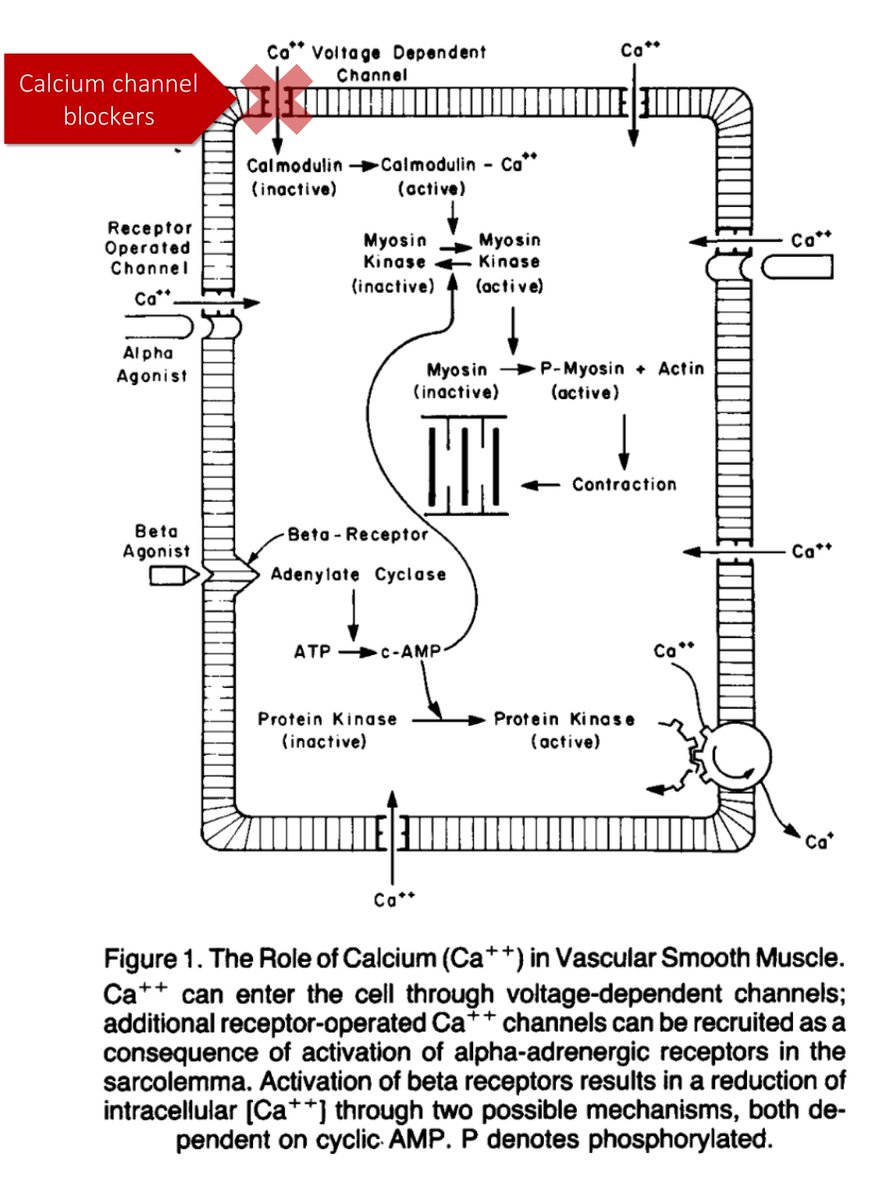How does acetaminophen decrease fever and pain, without affecting inflammation?
NSAIDs affect all three. What explains the difference?
This thread, a cross-over with the @COREIMpodcast, will try to answer these questions.
Let's start with a question related to acetaminophen (APAP) and fever.
What enzymatic activity does APAP inhibit to act as an antipyretic (i.e., fever reducer)?
In order to understand how APAP acts as an antipyretic, we first have to understand how fever is generated.
While there are likely multiple mechanisms, the key one for this thread results in the production of PGE₂.
ncbi.nlm.nih.gov/pubmed/10074418
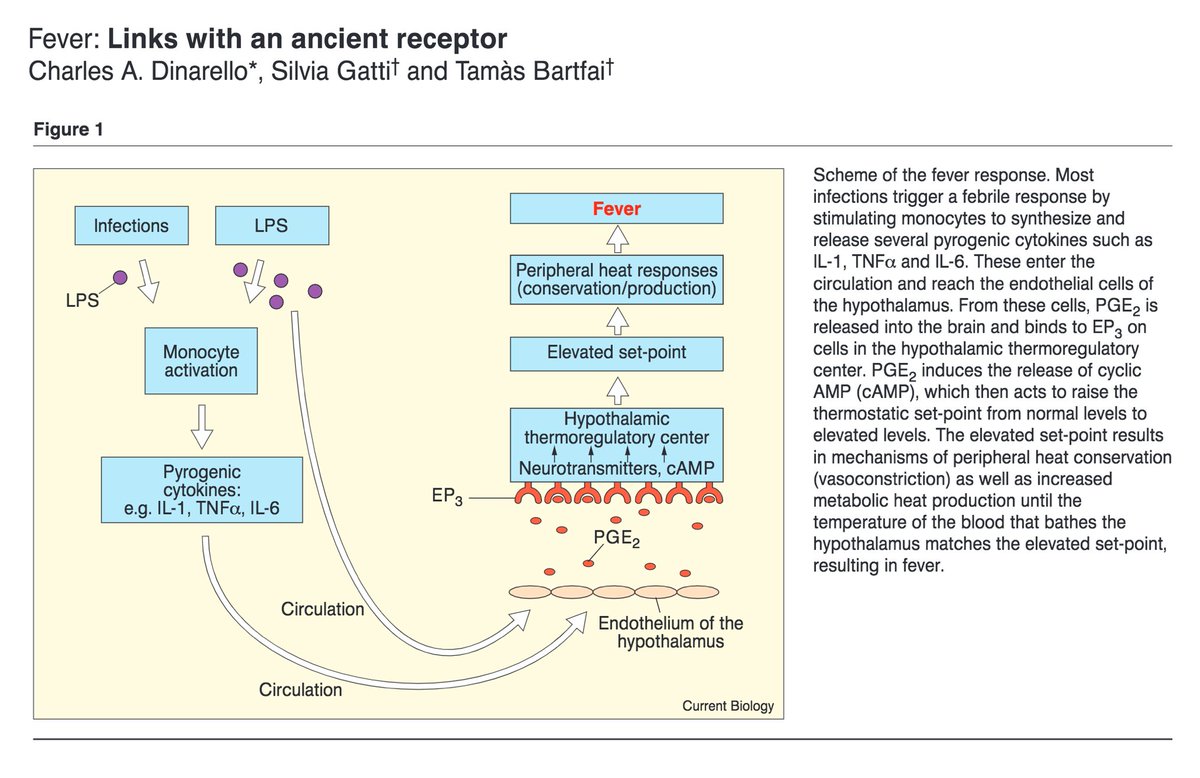
NSAIDs work as antipyretics by decreasing PGE₂ production. They achieve this by inhibiting prostaglandin-endoperoxide synthase, also known as cyclooxygenase (COX).
So, the question becomes: does APAP inhibit this enzyme too?
APAP does appear to inhibit COX, particularly in the brain. This was suggested in 1972 by Flower and Vane.
They reported that APAP's inhibition of prostaglandin formation in the brain was significantly greater than in a peripheral organ (spleen).
ncbi.nlm.nih.gov/pubmed/4564318
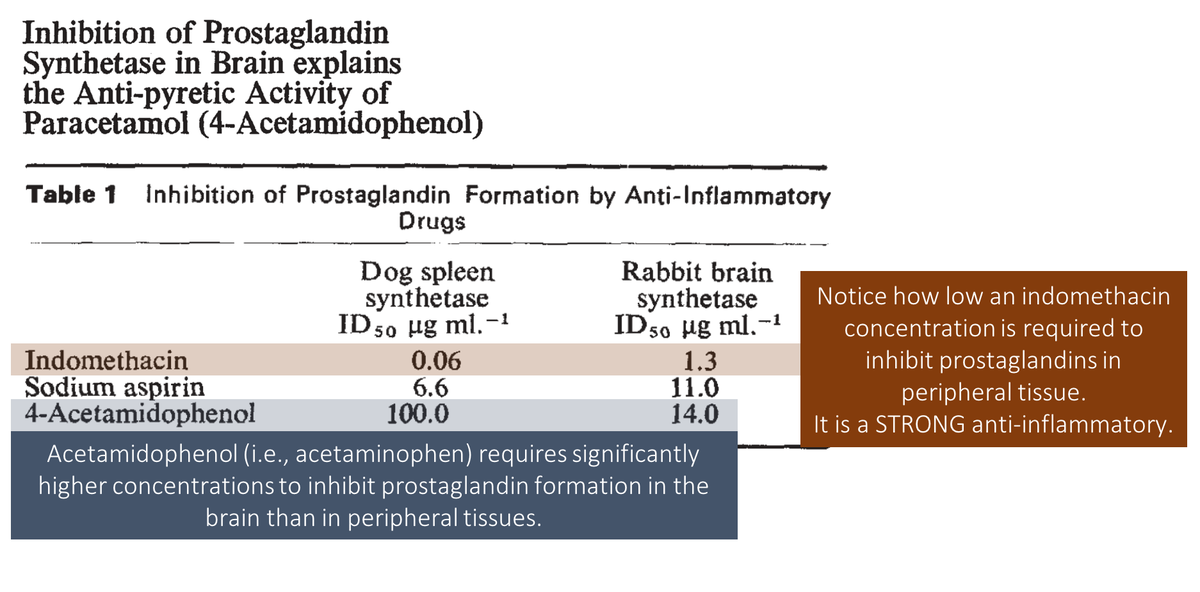
APAP's ability to decrease PGE₂ in the brain (more specifically, the hypothalamus), should explain part of its antipyretic effect.
[See tweet 3 for the schematic on fever generation.]
But, this leaves us with a mystery. If...
*decreased prostaglandin (PG) synthesis is the mechanism by which NSAIDs reduce fever and pain; AND
*this is also the mechanism of decreased inflammation; AND
*APAP reduces PG synthesis
...why doesn't APAP reduce inflammation too?
To understand the answer, it's important to recall that COX has two enzymatic functions; it is a cyclooxygenase AND a peroxidase.
APAP inhibits this second, peroxidase, function. And, it is only able to do this in settings of with low peroxide levels.
ncbi.nlm.nih.gov/pubmed/6816243

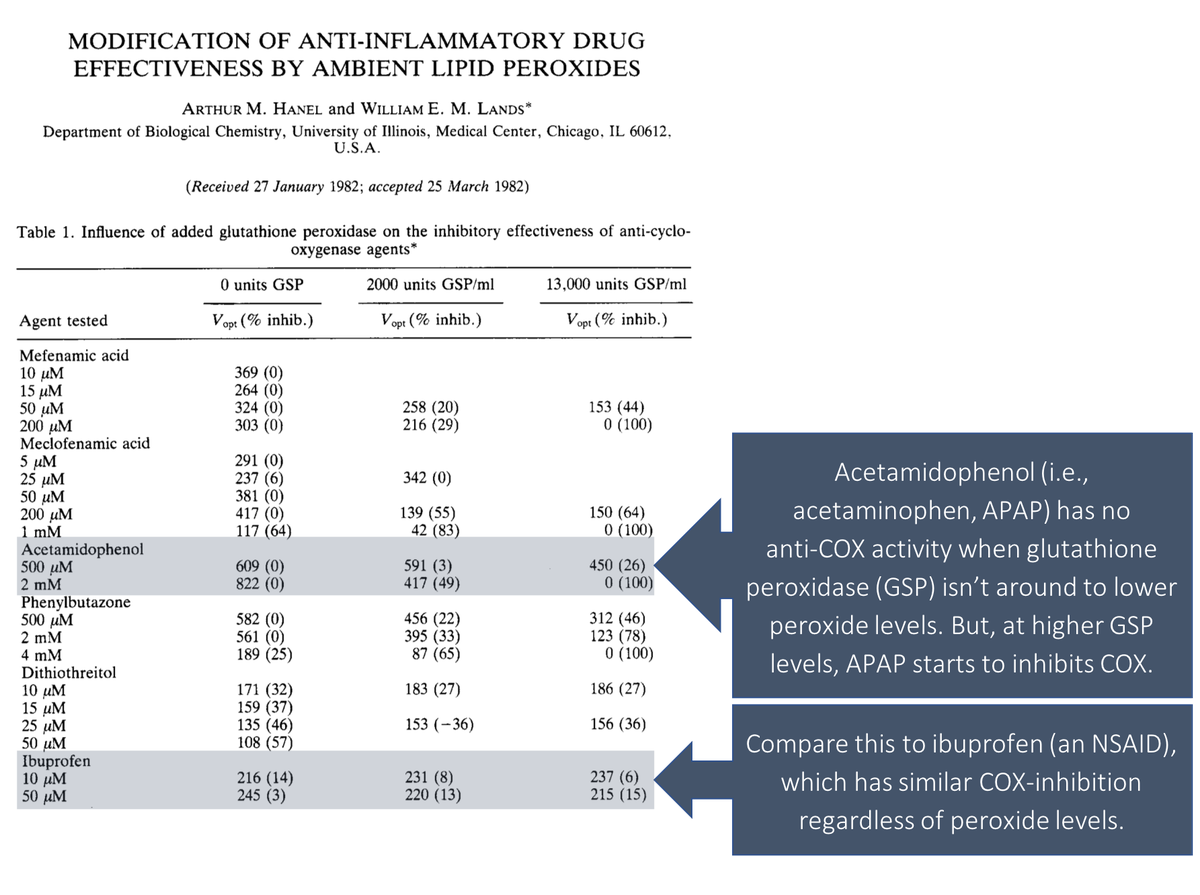
One area with LOW levels of peroxide: the brain (where APAP has been shown to reduce prostaglandins).
One area with HIGH levels of peroxide: sites of inflammation (where APAP is less able to reduce prostaglandins).
Result: APAP may lower fever, but not reduce inflammation!
Interim summary:
⭐️APAP inhibits the peroxidase activity of COX
⭐️COX inhibition is most pronounced in areas of low peroxide (e.g., brain)
⭐️APAP reduces hypothalamic levels of PGE₂ leading to fever reduction
⭐️Without peripheral COX inhibition, APAP is not anti-inflammatory
This leads to another mystery: If...
*a decrease in peripheral prostaglandins (PGs) is a major mechanism of NSAID-induced analgesia; AND
*APAP doesn't reduce peripheral PGs
...how does APAP cause pain relief?
What do you think? Which of the following most closely mirrors a proposed mechanism of APAP analgesia?
At least two non-prostaglandin mechanisms have been proposed. These include:
*cannabinoid pathways
*serotonergic pathways
I’ll briefly describe the first.
[Here's a link to a good review, covering even more: ncbi.nlm.nih.gov/pubmed/23719833]
AM404, a metabolite of APAP, is a weak agonist of cannabinoid receptors and activates TRPV1. AM404 also inhibits the reuptake of endogenous cannabinoids (e.g., anandamide).
TRPV1 activation + increased cannabinoids = analgesia
ncbi.nlm.nih.gov/pubmed/20862299
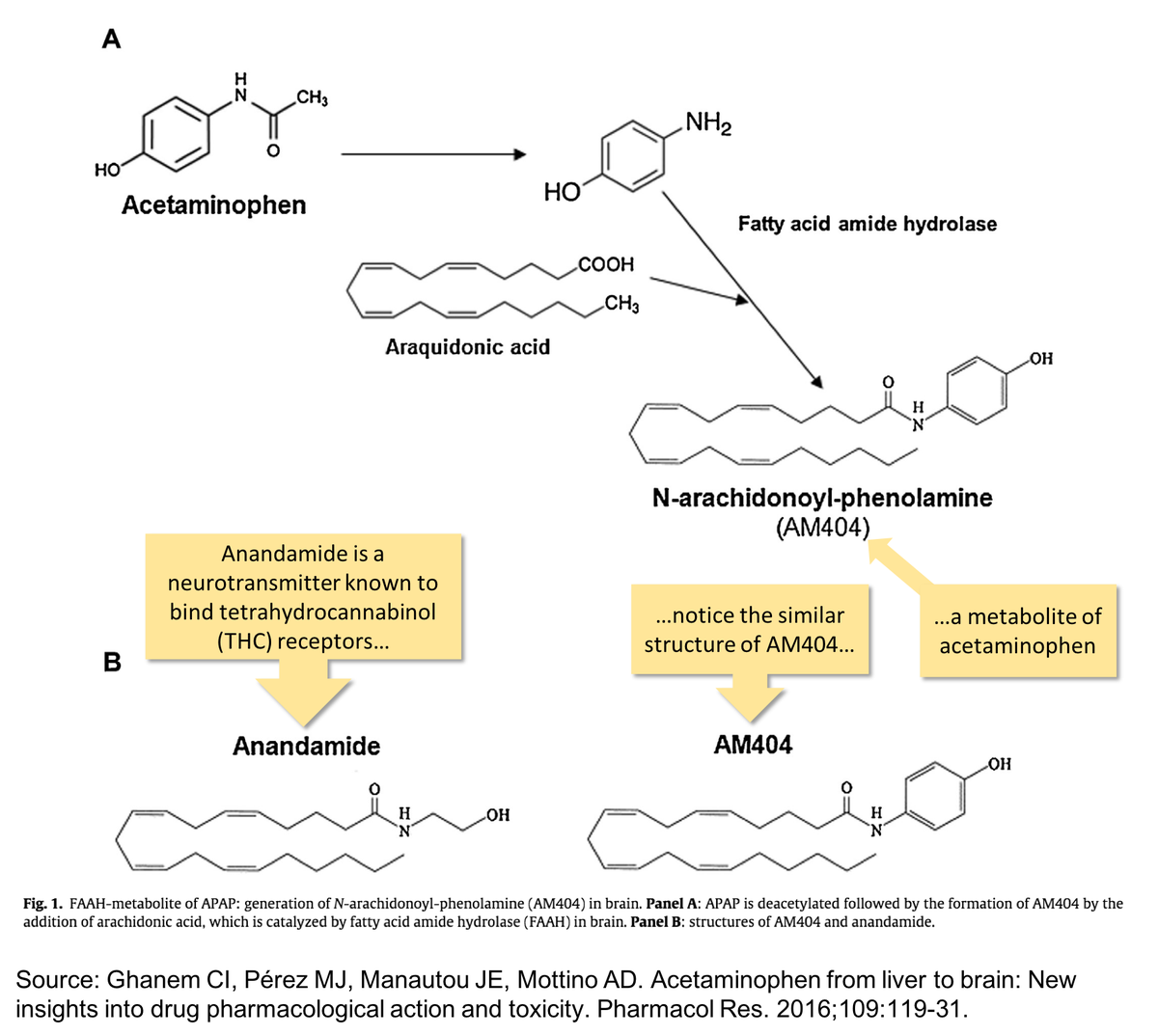
Before closing, let’s ask the original question about fever one more time.
What enzymatic activity does APAP inhibit to act as an antipyretic (i.e., fever reducer)?
Summary:
APAP's antipyretic effect is via:
⬇️ peroxidase activity of COX in the brain, leading to reduced hypothalamic levels of PGE₂.
APAP's analgesic effect is multifactorial; one mechanism involves:
⬆️ cannabinoid pathways via one of its metabolites (AM404).
If you found any of this interesting, check out the @COREIMpodcast on the topic. Steven Liu and @j9knudsen cover pathophysiology AND provide some evidence-based answers regarding APAP’s effects on fever.



